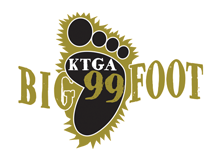July 5, 2023 |
Photo – Mullen Fire from 2021 – Bigfoot99 file photo
Wyoming Game and Fish provided an update recently on the recovery inside the Mullen burn scar in Carbon County.
In 2020, the Mullen Fire burned over 170,000 acres of southern Wyoming and northern Colorado. The fire wiped out significant amounts of plant life. Nearly three years later, the Wyoming Game and Fish Department said the Mullen burn scar is showing signs of recovery. Wildlife Biologist Lee Knox said some areas have come back faster than others.
Audio PlayerKnox said the Mullen Fire began on the west side of the Savage Run Wilderness and moved eastward. The wildlife biologist said the severity of the blaze wiped out most native plant species in its path. Knox said cheat grass, an invasive species of plant from Europe, has taken hold of the burned areas.
Audio PlayerKnox said once the invasive cheat grass takes hold, it crowds out native plant life. The wildlife biologist said cheat grass dries out early in the season and is prone to catching fire.
Audio PlayerBeginning in 2021, Wyoming Game and Fish, in conjunction with the US Forest Service, began a thorough survey of the burn scar. Game and Fish Habitat Biologist Ryan Amundson said the mapping effort identified 17,000 acres at high risk of being overrun by cheat grass. To prevent the invasive plant from spreading, Amundson said Game and Fish used a helicopter to spray a potent herbicide on the affected areas.
Audio PlayerAmundson said the US Forest Service contributed the majority of the funding for the project, using Congressionally appointed Burn Area Emergency Resource money. The habitat biologist said the remainder of the funding came from several different conservation organizations.
Audio PlayerAmundson said the project cost around $1.2 million in total.
It has been two years since the herbicide was applied. Amundson said various state and federal agencies, including Wyoming Game and Fish, have been monitoring the treated areas. The habitat biologist said he was pleased with the recovery he’s seen so far.
Audio PlayerAmundson said this year’s wetter than average winter and spring have greatly contributed to the recovery of the burn scar.
Bigfoot99 asked Amundson where the cheat grass came from. Amundson said the grasses were brought over from Europe and used as packing material on train cars. The grass inevitably made its way into the local ecosystem where seeds can lay dormant for several years. Amundson said the Mullen Fire created the ideal scenario for cheat grass to thrive.
Audio PlayerThe lack of plant life in the Mullen burn scar has left the area susceptible to flash floods. Amundson said cheat grass does nothing to stop the floods from happening. The habitat biologist said only deep-rooted native trees will prevent flash flood damage by stabilizing the soil.
Audio PlayerWhile the fire was certainly devastating, Wildlife Biologist Knox said it isn’t all bad news. Knox said the new plant growth provides animals with a fresh calorie-dense food source.
Audio PlayerWyoming Game and Fish will continue to monitor the recovery of the Mullen burn scar.













